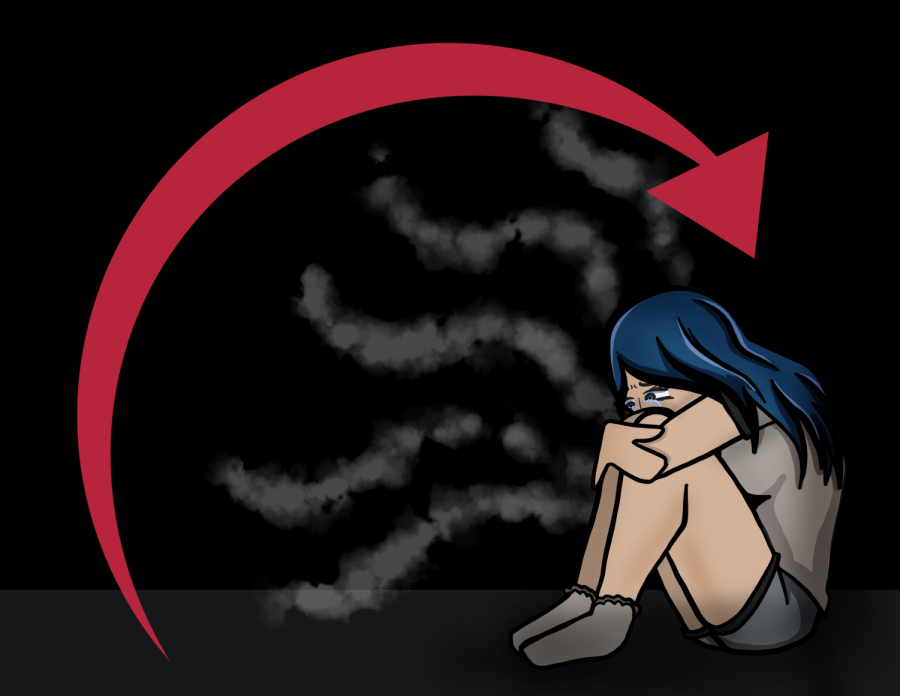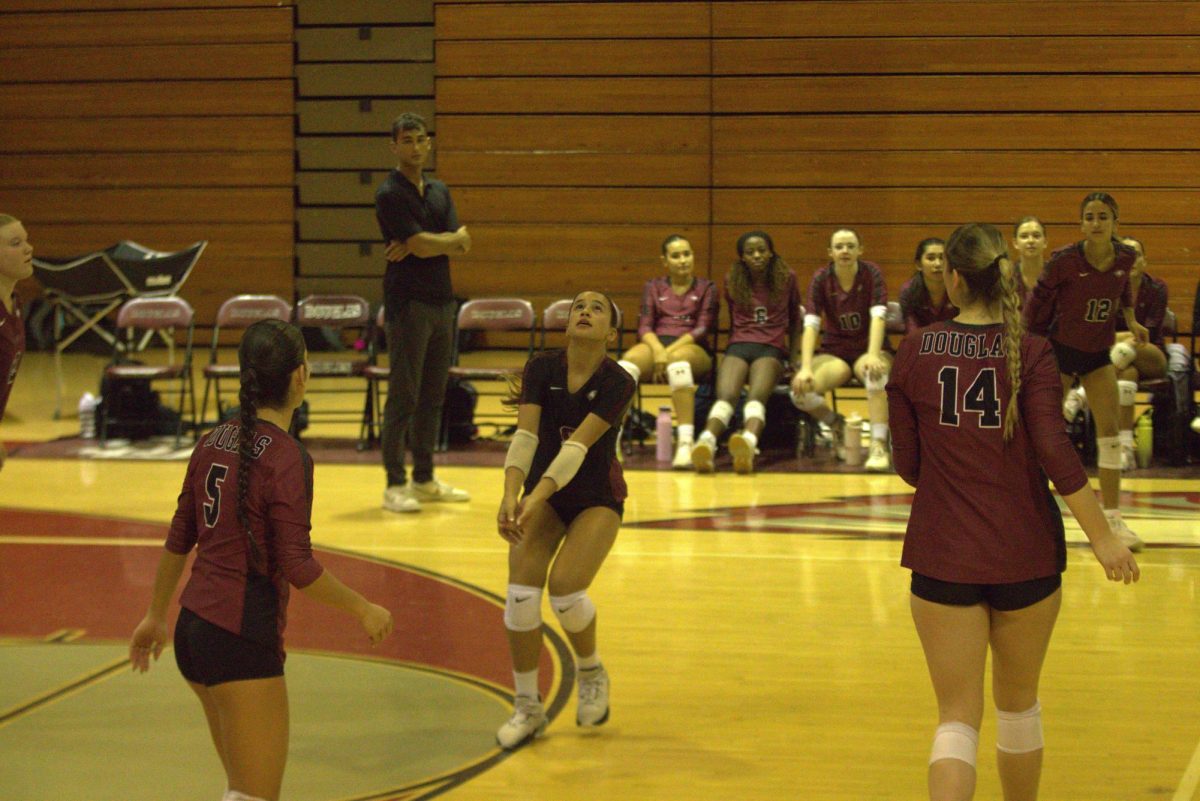[Opinion] Burnout is more than a just joke for high-achieving students
Burnout contributes to anxious and detached feelings in many high school students.
December 10, 2021
You’ve heard it before一“gifted kid burnout.” The concept, which has been spread around on the internet, is characterized by a person who is labeled “gifted” and expected to excel at school. They devoured books like they were candy and quickly became perfectionists. For these students, school came easy to them and they thrived on constant praise for their academic achievements.
This same person later in life, whether in high school, college or well into adulthood, has no motivation for school or work anymore, finds it difficult to even pick up books and gives up on anything they are unable to do on the first try due to their perfectionist tendencies. They struggle with school or work because the burnt out person never learned to study as they never needed to and struggle without the constant mode of achieving praise the student got as a child. Their mental health is rapidly deteriorating.
Despite the memes and audios on social media platforms including TikTok, burnout is more than a joke. Burnout is a state of physical, mental and emotional exhaustion due to excessive and prolonged stress, typically associated with the workplace and school.
In 2019, the World Health Organization added burnout to their International Classification of Diseases list. The ICD-11 is a diagnostic tool used by medical advisors. However, the ICD-11 diagnostic guidelines will not go into effect until 2022.
The United States uses a different set of guidelines–the Diagnostic and Statistical Manual of Mental Disorders. The DSM-5 does not include burnout.
Excessive and prolonged stress is, unfortunately, completely understandable among students. Almost 40 percent of parents say their highschooler is experiencing an abundance of stress from school, according to a 2013 study by National Public Radio, the Robert Wood Johnson Foundation and Harvard School of Public Health.
Midterm week is quickly approaching and it is becoming increasingly more difficult for students to get accepted into highly-selective colleges. Due to this, students have to work harder to be competitive, which means a higher workload and less time for leisure activities.
“Many American teens report experiencing stress at unhealthy levels, appear uncertain in their stress management techniques and experience symptoms of stress in numbers that mirror adults’ experiences,” the American Psychological Association said in a 2014 survey. “Meanwhile, teens report that stress is having an impact on their performance at home, work and school.”
Symptoms of burnout are both mental and physical. People who are burnt out often feel helpless, trapped, defeated, detached, alone, cynical, anxious, depressed, irritable and less motivated. Physical symptoms include frequent headaches, muscle pain, impaired concentration, forgetfulness, fatigue and changes in appetite or sleep. Burnt-out people tend to procrastinate, withdraw from their responsibilities, isolate themselves and take an extended amount of time to finish projects or assignments.
Burnout can last anywhere from weeks to months to even years.
The topic of burnout, especially among high-achieving kids, has shot up in awareness within the last few years. There was a viral audio on TikTok that said, “can’t talk right now, doing sad gifted kid burnout sh*t.” TikTok videos of people making lists of their experiences with burnout have gathered thousands of likes.
Moreover, a YouTube channel with over 900,000 subscribers for those with ADHD made a popular video on burnout. Even Taylor Swift spoke of something resembling burnout when speaking about her song “this is me trying” on her Disney+ special “folklore: the long pond studio sessions.”
“The second verse is about someone who felt like they had a lot of potential in their life. I think there are a lot of mechanisms for us in our school days, in high school or college, to excel and to be patted on the back for something,” Swift said in the special. “I think a lot of people get out of school and there are less abilities for them to get gold stars. And then you have to make all these decisions and you have to pave your own way and there’s no set class course you can take.”
Despite the humorous nature of the “gifted kid burnout” posts, they suggest inherent flaws in gifted programs. Studies have already shown that high-achieving students face higher rates of anxiety, depression and perfectionism.
Neurodivergent students are often left undiagnosed and placed in high-level classes, where they do well academically, but often struggle otherwise without a diagnosis bringing them the proper resources they need. Sometimes, it is difficult for parents and teachers to be able to differentiate between neurodivergence and giftedness. There is a high overlap in neurodivergent and high-achieving traits, including sensory issues, struggles with social skills, emotional processing, anxiety and depression.
With the combination of neurodivergence and being placed in the gifted program, it’s no surprise burnout is so common in the overlap of these two circles. People with ADHD often struggle with both fatigue and burnout, yet both are underdiscussed in ADHD circles.
Autistic burnout, burnout faced specifically by autistic people, is widely talked about within the autistic community, but among neurotypicals, it is not well-known. Autistic burnout symptoms vary with each person because autism is a spectrum. However, symptoms can include fatigue, increased sensory difficulties, emotional dysregulation, severe anxiety, depression, increased stimming and more difficulty coping with change.
In addition, research shows that girls, students of color and low-income children are systematically under-referred to high-achieving programs and classrooms. Girls, students of color, low-income children and disabled children also face unique challenges in high-achieving programs.
High-achieving kids also struggle with studying, time management and organization. In earlier years of school, high-achieving students could easily slide by without ever studying. They often fall behind in these aspects because while their peers are learning how to plan and study, high-achievers are breezing through their assignments on solely intellect. When they finally reach a point where intellectual strength is not enough, they run into a brick wall.
High-achieving kids have extremely high rates of perfectionism. A 2019 study by the Journal for the Education for the Gifted discovered that teens who are extremely intelligent tend to be perfectionists, especially compared to their peers.
Students learn to thrive on praise for their academics and begin to form their identity around their intelligence and status as a “gifted” individual, making them extremely susceptible to perfectionism.
This creates the never-ending cycle where people work extremely hard to make their assignments perfect to the point that they overwork themselves. As a natural consequence, they burn out. With burnout comes a lack of motivation, concentration and increased procrastination, which makes it even more difficult to create perfect work and the cycle restarts.
However, the feeling that someone’s identity and self-worth is based on intelligence is not a gifted-exclusive experience. In general, students are taught by the school system in multiple ways where grades “define” their worth. A 2002 study found that over 80 percent of college freshmen based their self-worth on academic performance.
If you’re experiencing burnout, it’s important to acknowledge you are experiencing burnout, instead of ignoring the issue. Overcoming burnout is a long and difficult process, but seeking professional help and/or learning how to manage stress can greatly improve your situation. Be sure not to overwork yourself. Accommodating yourself is extremely important一if listening to music helps you better focus, don’t deny yourself the accommodation.
With this in mind, it is no surprise students are facing burnout. Burnout isn’t just a TikTok audio or a meme, but a real struggle students are facing everyday.











